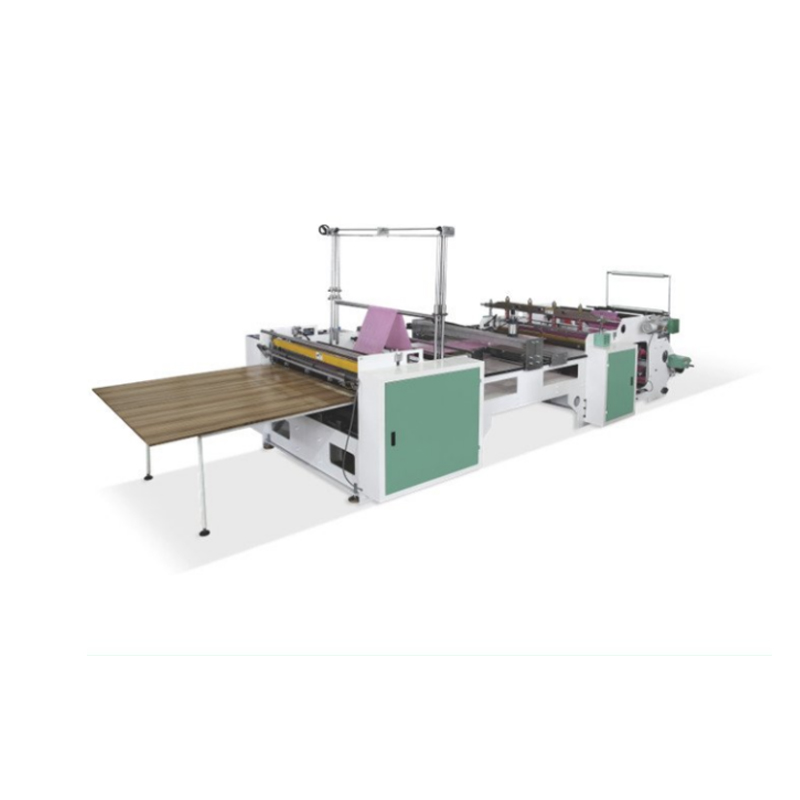Heat Sealing and Cold Cutting Bag Making Machines: Redefining Precision and Efficiency in Bag Production
 By Admin
By Admin
The flexible packaging sector continuously seeks innovative solutions to improve production efficiency, product quality, and material utilization. Among these innovations, the Heat Sealing and Cold Cutting Bag Making Machine has gained significant traction for its ability to produce high-quality bags with material waste and structural integrity.
Combining heat sealing technology with cold cutting methods, this equipment offers a distinctive approach that enhances performance across multiple bag types and applications.
1. Dual-Technology Operation: Heat Sealing Meets Cold Cutting
The key innovation of this machine lies in its integration of two complementary technologies:
Heat Sealing: Using heated sealing bars or jaws, the machine creates airtight, durable seals by melting and bonding thermoplastic materials along the bag edges.
Cold Cutting: Instead of traditional hot knives, the machine employs cold cutting mechanisms, such as rotary blades or guillotine cutters, to separate individual bags without generating heat.
This combination preserves seal integrity while ensuring clean, burr-free edges that minimize the risk of film damage or deformation.
2. Enhanced Bag Quality and Edge Precision
Heat sealing guarantees strong and consistent seals that withstand stress, punctures, and tearing during use. The cold cutting process complements this by producing precise, sharp bag edges free from melted residues or irregularities common in hot knife cutting.
The result is bags with neat profiles and mechanical strength, essential for packaging products that require reliable containment, such as food items, pharmaceuticals, or industrial goods.
3. Reduced Material Waste and Improved Yield
Cold cutting offers an important advantage over hot knife cutting by eliminating edge melting and film shrinkage, which often lead to scrap or rejected products. The clean cuts minimize the risk of frayed edges, reducing the amount of unusable trim generated during production.

Consequently, manufacturers benefit from improved material utilization and reduced raw material costs—key factors in competitive markets where every gram of film counts.
4. Versatility Across Materials and Bag Types
Heat sealing and cold cutting machines are designed to handle a wide range of thermoplastic films including polyethylene (PE), polypropylene (PP), laminated films, and biodegradable polymers.
They are suitable for producing diverse bag formats such as flat bags, gusseted bags, zipper bags, and specialty pouches. The machine’s adjustable sealing temperature and pressure, coupled with precise cutting controls, enable processing of films with varying thicknesses (commonly from 15 to 100 microns) and multilayer structures.
5. High-Speed Production with Consistent Quality
Equipped with synchronized sealing and cutting systems, these machines maintain stable production speeds—typically ranging from 40 to 120 bags per minute depending on bag size and film type—without sacrificing quality.
The cold cutting mechanism operates smoothly at high speeds, ensuring continuous production with vibration or mechanical wear. This stability reduces downtime and scrap rates, boosting overall productivity.
6. Intelligent Control Systems and Process Monitoring
Modern machines feature programmable logic controllers (PLCs) with user-friendly touchscreens, allowing operators to set and adjust sealing temperatures, cutting speeds, pressure, and timing parameters easily.
Integrated sensors monitor sealing quality and blade positioning in real time, triggering alarms or halting the line if abnormalities occur. This proactive fault detection enhances product consistency and prevents costly production errors.
7. Energy Efficiency and Reduced Thermal Stress
Compared to hot knife cutting, cold cutting consumes less energy and reduces thermal stress on the film. This is particularly beneficial when working with heat-sensitive materials or films prone to deformation.
Additionally, precision temperature control on the sealing units ensures energy consumption while maintaining effective seals, supporting manufacturers’ sustainability goals.
8. User-Friendly Maintenance and Safety Features
The design of heat sealing and cold cutting bag making machines prioritizes ease of maintenance. Cutting blades and sealing bars are easily accessible and replaceable without extensive disassembly, reducing downtime during routine servicing.




